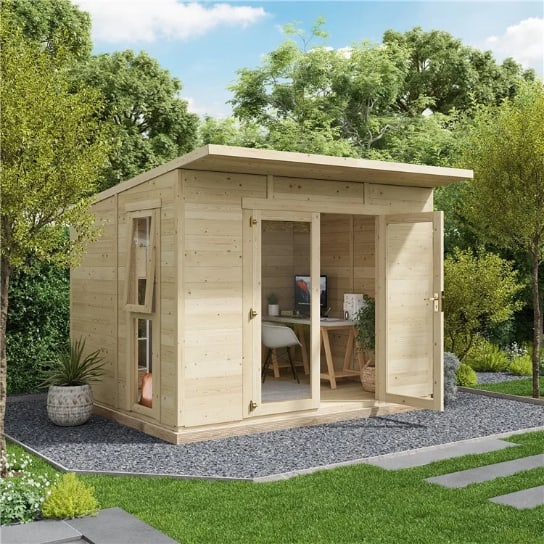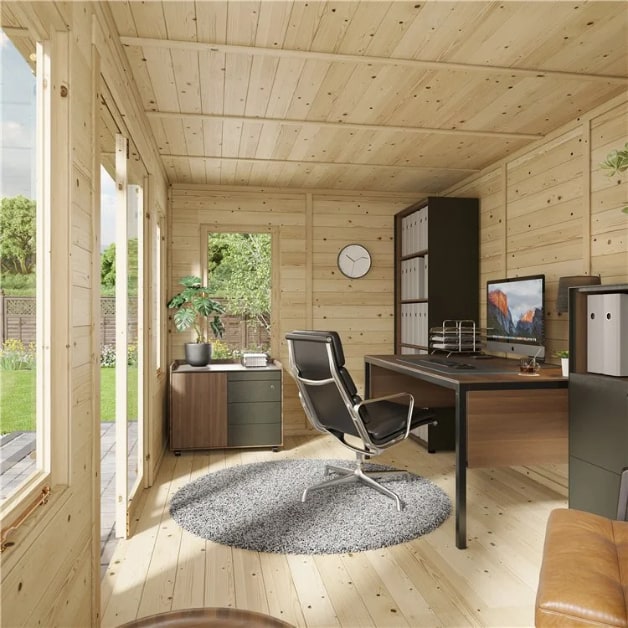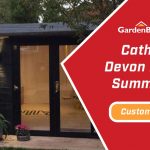Jump to:
Do you wonder whether an insulated log cabin will benefit you more? We get it — you want to make sure you’re investing your money in the right garden building. Here, we settle that common dilemma once and for all, covering the helpful bits you need to know!
What Makes Insulated Log Cabins Different from Traditional Ones?

Insulated log cabins are equipped with extra insulation layers to better regulate temperature. Unlike traditional cabins, they don’t depend solely on thick logs for warmth. Instead, these structures feature materials like foam or fibreglass between the logs. This added insulation maintains warmth during cold winters and keeps the interior cool amidst summer heat.
As a bonus, investing in an insulated log cabin eliminates the need to install insulation separately, as it’s already built-in.
How Does Insulation Impact the Comfort of Log Cabins?
Insulation impacts the comfort of log cabins by creating a barrier against heat flow. It maintains a consistent interior temperature regardless of the weather outside. As a result, during hot summers, the insulation keeps the inside cool, while in cold winters, it traps warmth inside. This consistency makes your stay cosy and comfortable year-round.
How Efficient Are Insulated Log Cabins in Maintaining Temperature?

Insulated log cabins are highly efficient when resisting external temperature fluctuations. The insulation maintains a stable environment without reliance on heating or cooling systems. This means less energy is required, resulting in lower energy consumption and reduced utility expenses.
What’s the Role of Thermal Envelope?
The term ‘thermal envelope’ holds the key to comfort and efficiency. It works by shielding your cabin unit from the outdoors. All thanks to these several vital components that work together:
- Vapour membranes
- Walls and roof assemblies
- Insulation (roofing and flooring)
- Window glazing
- Caulking
In essence, anything that aims to stop heat from moving from your garden cabin to outside. All these elements make up the thermal envelope.
What Are the Environmental Impacts of Insulated Log Cabins?
The environmental impacts primarily revolve around sustainability and a reduced carbon footprint. Insulation in these cabins plays a vital role in achieving these goals. By reducing heat transfer, it lowers energy consumption and decreases reliance on fossil fuels. The durability and longevity also mean fewer resources are needed for maintenance over time. This translates to a smaller carbon footprint.
Key Takeaways
An insulated log cabin is cheaper to maintain and won’t sting you for as high an energy bill. Heating a log cabin can be a losing game if you don’t have a proper base or floor insulation. That’s because the earth is a massive heat drain and will draw heat away from your cabin.
It also means less humidity. When storing gym equipment or electronics, the last thing you want is moisture. That’s exactly what humidity leaves behind.
Instead of allowing your log cabin to turn into a sweatbox in summer, consider insulating it. If you plan to invest in one soon, opt for an insulated cabin model.
If you have any further questions, please don’t hesitate to contact us at 01909 768840. Up next on your reading list: What Is the Best Thickness for a Log Cabin?










